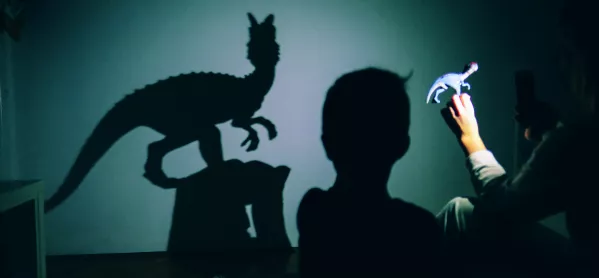- Home
- EYFS: why risky play is key, and how to support it
EYFS: why risky play is key, and how to support it

When does play become “risky”?
Is it going up, rather than down, the slide? What about building block towers “too” high or balancing on precarious surfaces or going “too” fast? Is it just simply any action that makes us think, “What if…?”.
It’s highly likely that the thresholds we each have for when our “what if?” kicks in are unique, and dependent on each context and, more importantly, each child. The same goes for the moment we will step in to act upon that “what if?” moment.
Quick read: Early interventions - too much too young?
Quick listen: What does ‘school-ready’ actually mean?
Want more articles like this? Join our Tes Teaching and Learning Facebook group
But my question is this: in general, are we too quick in EYFS to step in to stop play that we deem to be risky?
To be clear, asking ourselves “what if?” is an essential tool for any reflective early years teacher. It’s something we should be asking ourselves throughout the day, in many different contexts.
Early years: playful lessons
But we must also recognise that these “what ifs” can cloud our vision and judgement. Our very legitimate worries over potential tears, parent anger, line manager critique, accident forms to fill out, children’s conflicts and more tend to take precedence over children’s opportunities for physical, emotional and cognitive development.
So what am I suggesting that we do about it?

What you should not do is ignore your instinct or personal judgement. Instead, I am arguing that part of our job as early years teachers (whatever your job title or pay grade) is learning to sit with our own worries and anxieties enough to more sharply hone our instinct and personal judgement.
I’ll share a personal example to demonstrate specifically what I mean.
The ‘hover’
I teach and care for two-year-olds. When they first come into our programme, I don’t yet know their capabilities, so when they start to engage in more challenging climbing or balancing, I make a point of watching them like a hawk.
If my own “what ifs” start to build, I do not shout “be careful!” to them. Rather, I come much closer while trying my best to not project any sense of worry about their climbing.
Being close and calm serves two very important purposes.
One, it helps to quieten down my worries (which I still do have plenty of), as I know I can catch them or otherwise intervene if they were to fall from a height I am not comfortable with.
More importantly, and this has only come with practice, children almost always prove my initial worries absolutely wrong, time and time again.
The more I “let go” of my initial worries and give children space to try things for themselves, the more confident and capable they become and the less I have to worry in the future.
EYFS objectives
Yes, sometimes children are going to hurt themselves. But that is a crucial and necessary part of childhood and life in general. Falling down and learning to get up again is one life’s most important lessons. We don’t do anyone any favours by denying children this lesson.
For this approach to work, it needs whole-school buy-in. Leaders of schools, settings and rooms have a major part to play in giving space and support for children’s risky play. If the leaders don’t understand it’s importance, they can greatly add to teachers’ worry and anxiety. Leaders also need to have a strong, friendly and proactive policy of educating parents and families about “why we let children do that”.
It should go without saying that it is our absolute responsibility to keep children safe from hazards. But it is not our responsibility to keep children safe from every possible risk. Rather, it is our responsibility to assist children in their hard-wired drive to learn to assess and manage risk for themselves.
Depending on our own temperament, this can be hard to do, and I entirely empathise, but our “what ifs” cannot take precedence over children’s opportunities for physical, emotional and cognitive development.
David Cahn is an early years teacher and carer in a busy inner-city children’s centre and primary school in Leeds. He has nearly self-published Umar, his first children’s book
Keep reading for just £1 per month
You've reached your limit of free articles this month. Subscribe for £1 per month for three months and get:
- Unlimited access to all Tes magazine content
- Exclusive subscriber-only stories
- Award-winning email newsletters



